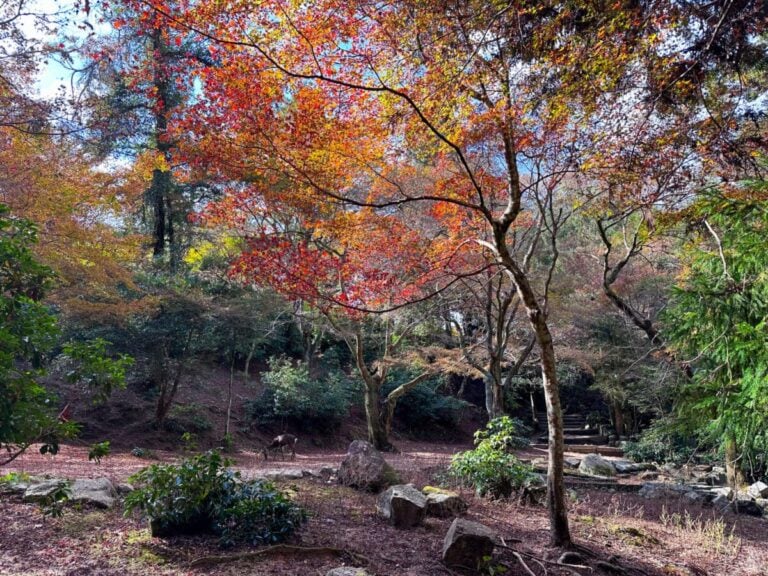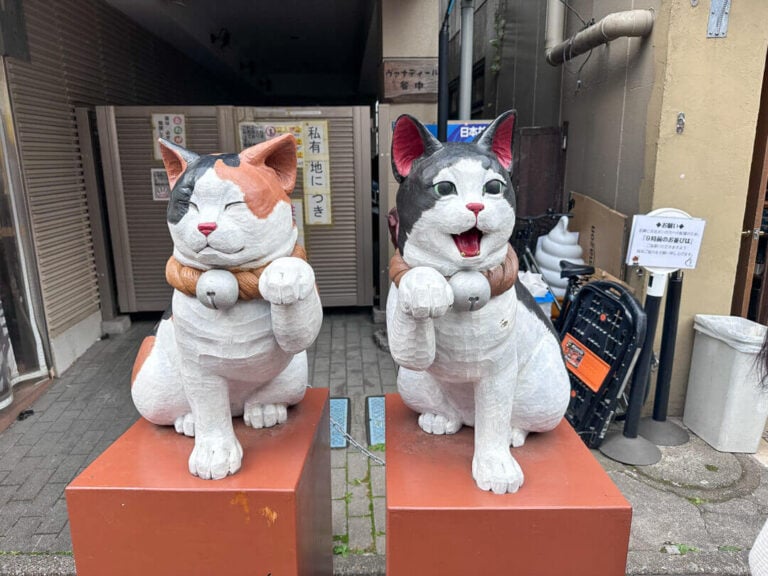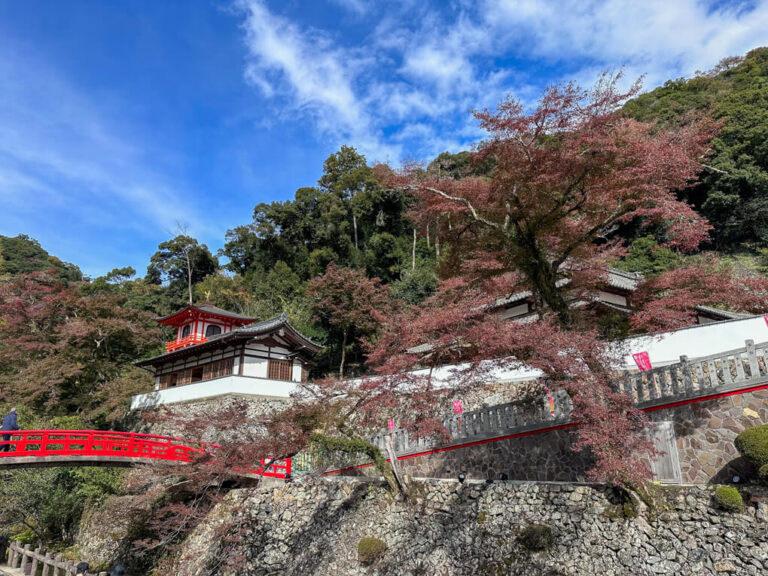Solo Travel in Japan: 16 Helpful Things to Know
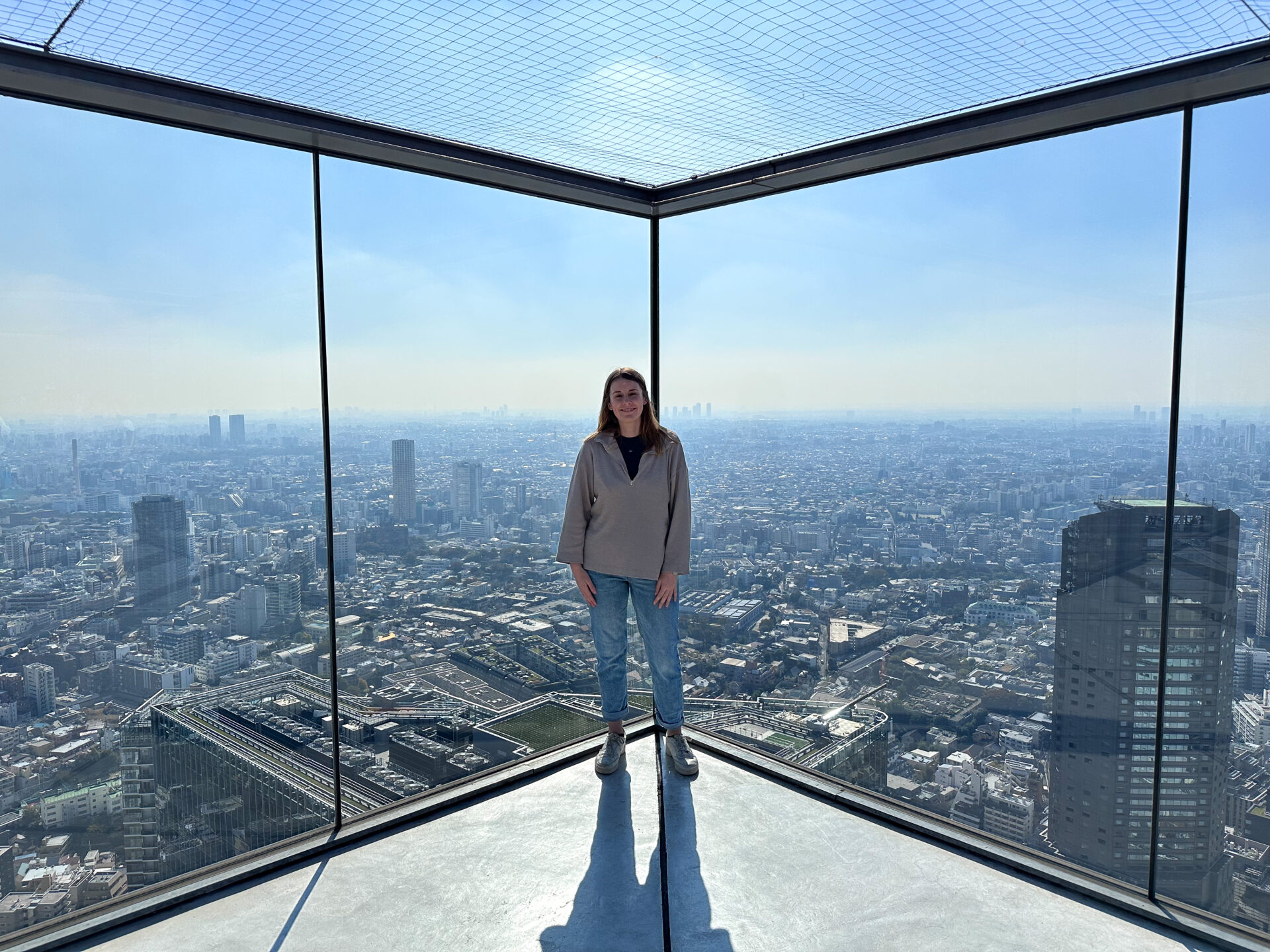
Japan is like no other country in the world. It’s full of unique wonders, unforgettable experiences, and has a fascinating culture. Japan is often named one of the best countries in the world for solo travel. This makes it a popular destination for solo travellers, especially solo female travellers.
I spent almost four weeks solo travelling in Japan. I absolutely loved it. But I’d be lying if I said it wasn’t challenging at times.
In this post, I’ve shared all you need to know about solo travel in Japan. I’ve also attempted to answer the question: ‘Is Japan good for solo travel?’.
While many blogs online say it is, I do think it’s important to also look at the negatives. Yes, Japan is an amazing country for solo travel. It’s safe and full of incredible sights. However, with many cultural and language barriers, it can be an isolating experience.
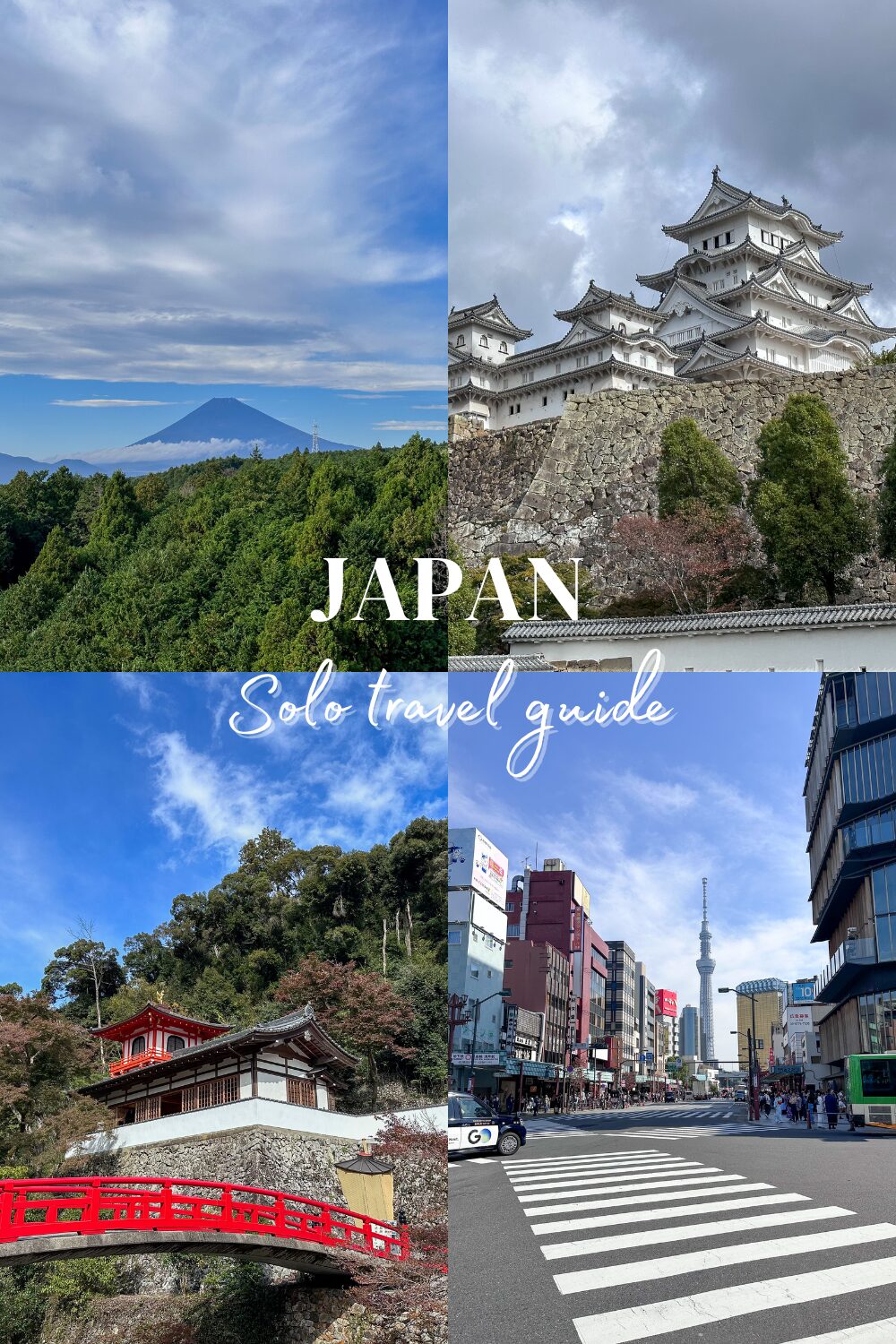
Despite the challenges of travelling solo in Japan, I do believe it’s a fantastic solo travel destination. I can’t wait to return one day and would happily go back as a solo traveller.
If you’re questioning whether travelling alone in Japan is right for you, I hope you find the below post useful. I’ve tried to be as honest as I can, sharing some of the disadvantages of solo travel in Japan as well as the many positives.
Japan is safe for solo travel
When it comes to the safest countries for solo travel, it doesn’t get much better than Japan. According to the Global Peace Index, Japan is the 9th safest country in the world.
Serious crimes and petty crimes are infrequent occurrences in Japan. Many tourists happily walk around at night with no problems whatsoever. It’s even common for locals to leave their phones and laptops out in coffee shops while they go to the bathroom. Theft is that uncommon!
Of course, crime is always a possibility wherever you are in the world. While Japan might be on the safer side, it’s still important to be aware of your surroundings and not take any risks. This is especially true for solo female travellers.
The best time of year to visit Japan
Deciding when to visit Japan is a big decision. Each season offers something unique and special. Whenever you visit Japan, it promises to be an epic destination.
If you’re struggling to decide when to visit, here are some things to consider:
Spring (March to May) – spring in Japan marks the famous Cherry Blossom season (Sakura). As the weather warms and the days grow longer, Japan’s landscape is filled with beautiful cherry blossoms. This is the busiest time of year in Japan. Unless you’re desperate to see the famous cherry blossoms, I’d avoid visiting during this time. It can be very crowded and accommodation prices are much higher.
Summer (June to August) – the summer months in Japan can be hot and humid, especially in Tokyo. If you can cope with the heat, the summer is a great time to visit Japan. The Typhoon season in Japan is from May to October. This can sometimes have an impact on transport and activities, but it’s not an everyday occurrence by any means.
Autumn (September to November) – Autumn is the best time of year to visit Japan. The weather is cooler, the crowds are fewer and Japan lights up with red, orange and gold as the fall colours put on a show. Autumn in Japan is also the best time of year to see Mount Fuji. While the weather can never be guaranteed, the month of November boasts regular clear skies and sunny days.

Winter (December to February) – the winter months are a unique time to visit Japan. In areas such as Hokkaido, there is often heavy snowfall making it the perfect ski destination. Major cities such as Tokyo and Kyoto are also no strangers to snow. While the snow doesn’t tend to settle, it’s still a pretty sight. Winter is the quietest time to visit Japan, just remember to wrap up warm.
As you can see, Japan is a year-round destination. Depending on what you want to see and do, there’s not a bad time to visit as such.
How to get around Japan as a solo traveller
The best way to get around Japan is by using its fantastic train system. Japan is renowned for having one of the best rail networks in the entire world. It can take a bit of getting used to, but once you’re familiar with it, it’s a great way to get around Japan.
Most of the major Japanese cities have extensive public transit systems. Tokyo alone has one of the world’s biggest Metro systems. There are train and bus connections all around the city making it easy to get around. I didn’t use a taxi once while in Japan.
Japan Rail Pass
Many visitors to Japan opt to purchase a Japan Rail Pass. Depending on which pass you buy, the JR Pass allows unlimited use of its rail network. This includes the famous Shinkansen (bullet train).
Explaining the ins and outs of a JR pass is an article (or three) in itself, but there’s a helpful guide here. I’m working on a guide to answer the question ‘Is a JR pass worth it?’, but here are a few things to consider:
- The JR Pass can only be used on the JR Network. Many train connections in major cities and between cities aren’t operated by JR Rail. For example, it’s not going to be the most useful for getting around Tokyo.
- Other rail operators offer similar services between cities. These are often cheaper and depending on the route, don’t take that much longer.
- Consider looking at regional JR Passes rather than one that covers everywhere. I only bought a JR Pass that covered the Kansai area and this worked perfectly for me.
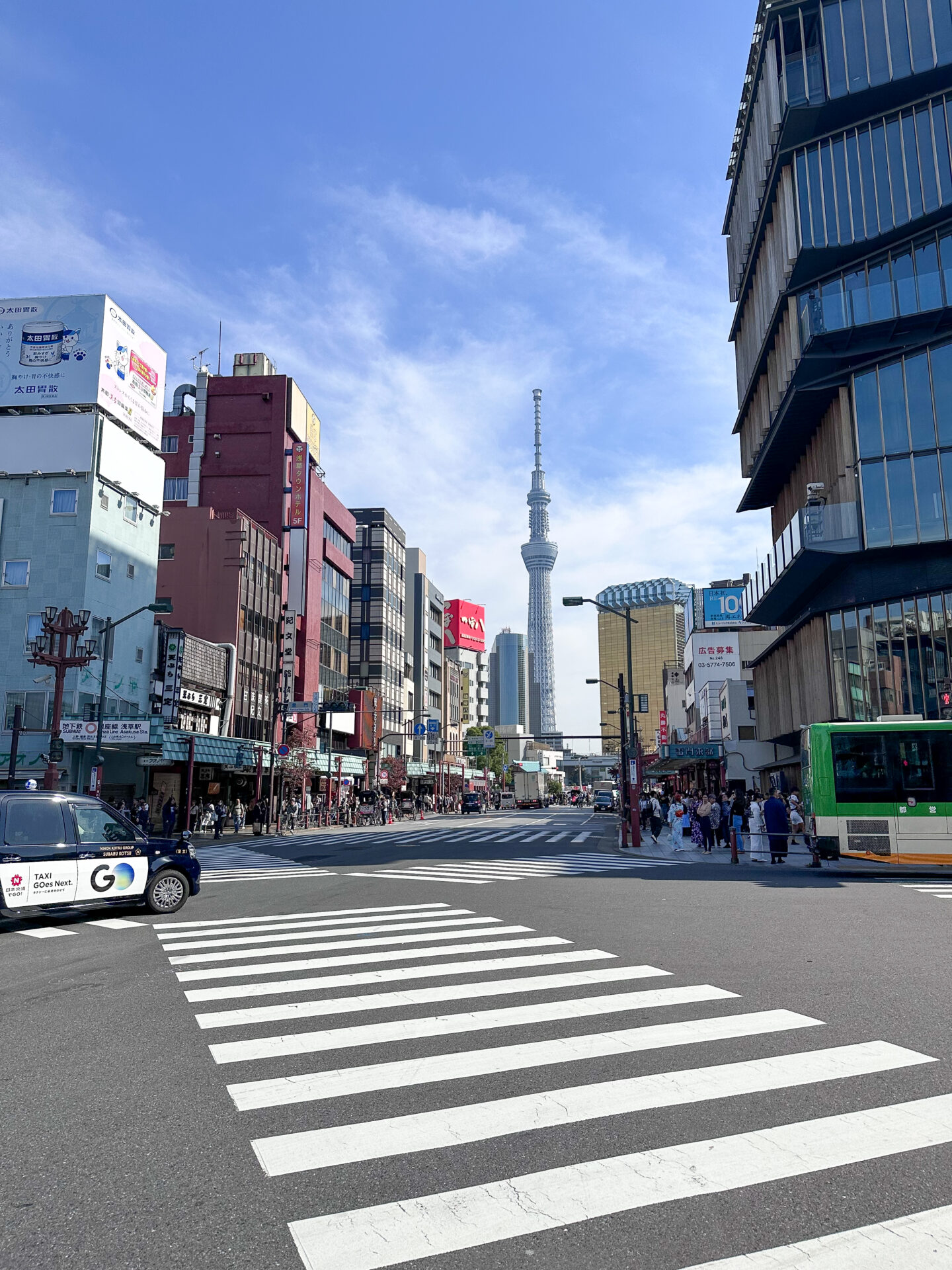
Pasmo or Suica Card
The Pasmo and Suica cards are both pre-paid travel cards. Think of them a little bit like an Oyster card in London. However, they can be used in many tourist destinations in Japan.
I only got a Suica Card on the last week of my trip and wish I had bought one sooner! You simply add money using a vending machine at a station, then tap in and tap out on your train and bus journeys. You can also use the cards to pay for lockers at stations and even in some shops such as 7-11.
Pasmo and Suica are generally interchangeable. I’d recommend waiting until you get to Japan to buy one. I found them to be a lot more expensive on the likes of Klook compared to buying one at the stations.
Tips for getting around Japan as a solo traveller
Download the Japan Travel App by NaviTime. This was a lifesaver on my trip.
Metro passes can save you money. All the major cities such as Tokyo and Kyoto offer 24-hour & 72-hour passes.
The trains in Japan are very punctual, don’t be late.
The train stations in Japan are HUGE and can be very overwhelming, especially the likes of Shinjuku and Tokyo Station. Arrive in plenty of time to find your platform.
Avoid travelling in rush hour, the trains can be very crowded.
The station staff are very friendly and helpful. Don’t be afraid to ask for directions or help.
The best places for solo travel in Japan
Building an itinerary for Japan is no easy task. I spent days and days (if not weeks) trying to figure out where I wanted to go in Japan and how long to stay in each place.
The truth is, it’s impossible to see Japan in one trip (unless you have months and months). You could spend a week in Tokyo alone and only scratch the surface of what the city has to offer.
Each of Japan’s cities has its own distinct charm with hidden gems waiting to be discovered.
Here are some of the best places to visit on a solo trip to Japan.
Tokyo
Tokyo is the capital city of Japan. It’s also the most populated city in the entire world!
There are mixed opinions on whether Tokyo is worth spending much time in. I personally love Tokyo! It’s a vibrant city with so many amazing and unique things to see and do. If it’s your first time in Japan, I highly recommend spending a few days here.
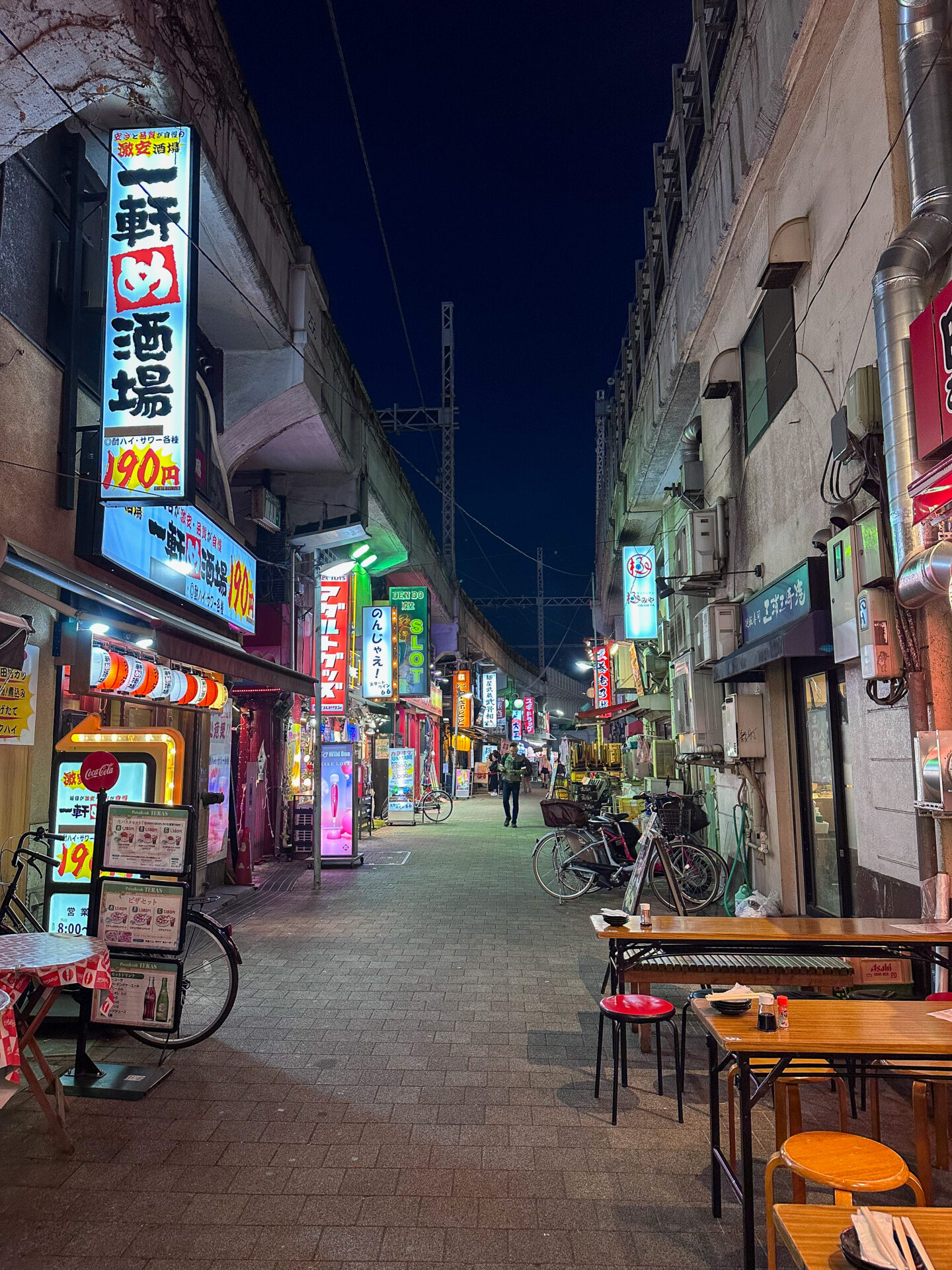
There’s an endless list of things to do in Tokyo, but don’t miss some of the highlights including Asakusa, Tokyo Skytree, Shibuya, Akihabara, Harajuku or Yanaka Ginza.
Suggested time to spend in Tokyo: four days
Best place to stay in Tokyo for solo travellers: I recommend staying at either Wise Owl Hostel in Shibuya or Nui Hostel in Asakusa.
Hakone
Hakone is my favourite place I visited on my solo trip to Japan. This beautiful area is nestled in the mountains and boasts some incredible scenery. Hakone is known for its relaxing hot springs (Onsen), traditional culture and epic views of Mount Fuji.
The area feels completely different to anywhere else in Japan (that’s on the tourist trail at least). It’s serene, laid-back and shows off an entirely different side to the country.
Hakone is the perfect day trip from Tokyo, but I’d recommend spending at least one night there to fully experience the area. There’s so much to do in the Hakone area and it would be impossible to see it all in one day. It’s also the perfect place to relax for a couple of days.

I have to say Hakone wasn’t the most social of areas. If you’re a solo traveller looking for nightlife and to meet other people, Hakone isn’t the place. But it’s beautiful nonetheless and a must-visit in my opinion.
Highlights in Hakone include the Lake Ashi Sightseeing Cruise, views of Mount Fuji, the Owakudani Volcanic Valley and the Mishima Skywalk.
Suggested time to spend in Hakone: 2 days
Best place to stay in Hakone for solo travellers: the Azito Guesthouse is the best hostel in Hakone
Related read: check out my suggested itinerary for Hakone
Kyoto
Kyoto is one of Japan’s most famous cities and an absolute must for anyone visiting Japan. If you’re interested in Japan’s history, Kyoto should be at the top of your list. There are 17 UNESCO World Heritage Sites in Kyoto, each offering a unique insight into Japanese culture and history.
Kyoto is home to many must-see attractions. From the famous orange Torii Gates of the Fushimi Inari Shrine to the Bamboo Forest of Arashiyama, Kyoto has a range of incredible sights. The Southern Higashiyama area of Kyoto is one of the best places to immerse yourself in Japan’s history. The area is known for its ancient temples, small boutiques and wooden tea houses. It’s also where you can sometimes see a Geisha.
While in Kyoto, don’t miss a trip to the Kiyomizu-dera Temple, a UNESCO World Heritage Site. This was one of my favourite temples I visited in Japan. It can get VERY crowded though, so go as early in the day as possible.
Suggested time to spend in Kyoto: 2 to 3 days.
Best hostels in Kyoto: Piece Hostel is one of the best hostels in Osaka. Len Kyoto is another good option.

Osaka
Osaka is the perfect place to base yourself for a few days. It’s one of the biggest cities in Japan and has a completely different feel to it than Kyoto. The city is modern and vibrant but still has plenty of history attached to it. It also has some of the best food in Japan.
Osaka is a great base for day trips. There are so many epic day trips from Osaka including Nara, Kyoto, Hiroshima, Himeji and Kobe. While in Osaka, don’t miss a trip to the stunning Minoo Park. It’s a great escape from the crowds of Osaka.
Highlights in Osaka itself include Osaka Castle, the Umeda Sky Building, and the amazing street food.
Suggested time to spend in Osaka: at least 3 days
Best hostels in Osaka: I recommend staying in The Pax or Imano.
Hiroshima
A trip to Hiroshima offers a unique insight into Japan’s past. The city was the victim of a nuclear bomb back in 1945. Despite being destroyed, the city rebuilt itself.
One of the best things to do in Hiroshima is visit the Hiroshima Peace Museum. It educates visitors about the devastating incident, but also shows the resilience of the Japanese.
While in Hiroshima, a trip to Miyajima is a must. This beautiful island is home to the Itsukushima Shrine, one of the most beautiful shrines in all of Japan.
Suggested time to spend in Hiroshima: 2 days (or a day trip from Osaka, but you’ll struggle to see everything).
Best hostels in Hiroshima: I stayed at Akicafe Inn, it’s one of my all-time favourite hostels.
Related read: Plan your trip to Hiroshima and Miyajima with this 2-day itinerary suggestion
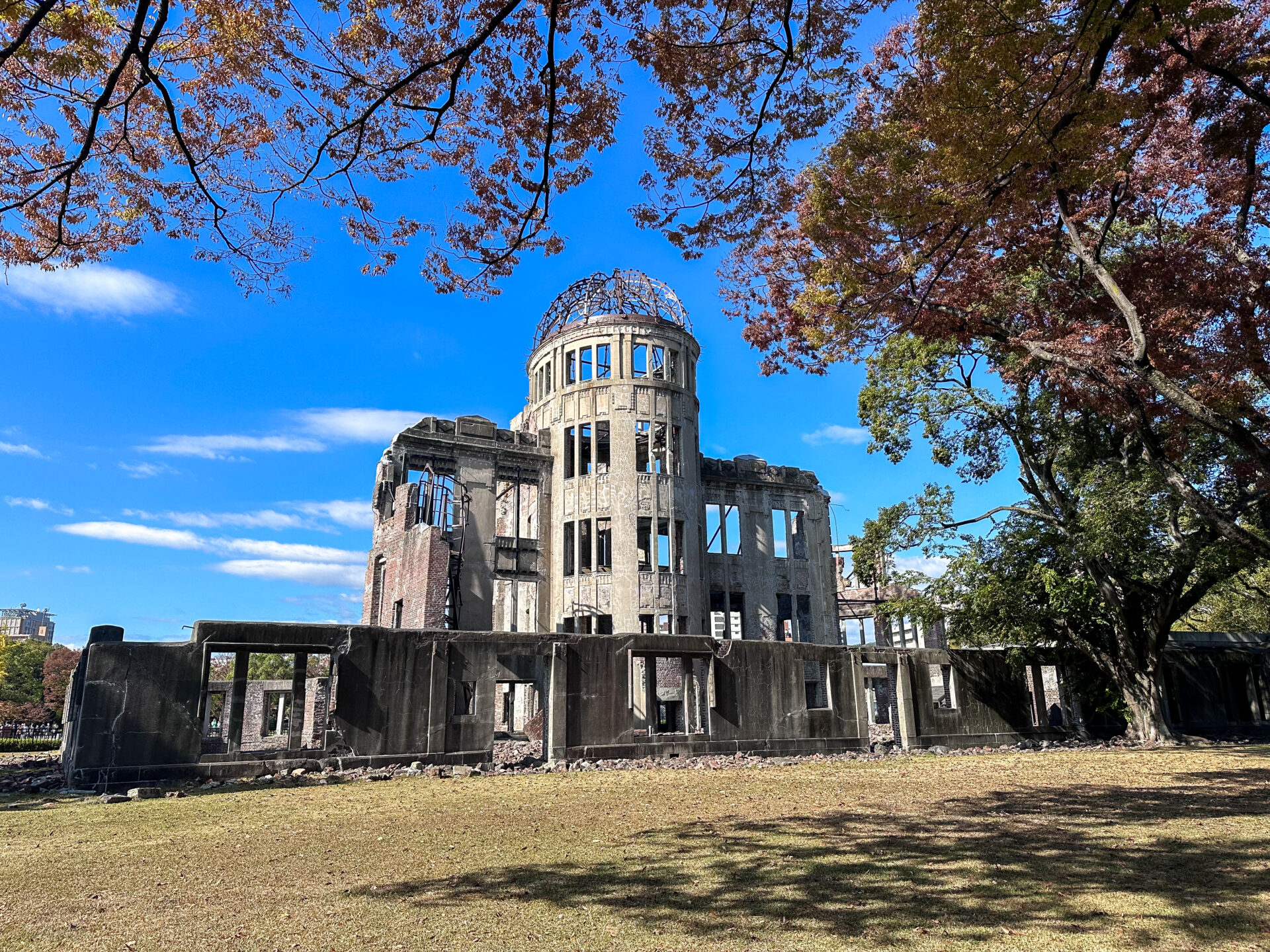
Okinawa
Okinawa is a great place to relax for a few days. This stunning area of Japan is home to white sand beaches and crystal clear water. It offers an entirely different experience for your trip to Japan.
There’s not a huge amount of things to do in the area, but if you want to relax on the beach and snorkel in the ocean, Okinawa is the perfect destination.
Suggested time to spend in Okinawa: 3 days
Best hostel in Okinawa: MyPlace Guest House
There are lots of hostels in Japan
Staying in hostels is a fantastic way to meet other travellers when on a solo trip to Japan. The Japanese hostels are some of the nicest hostels I’ve ever stayed in. They are clean, modern, and often have privacy curtains on the beds. For solo female travellers, many also have female-only dorm rooms as well as private rooms.
Staying in hostels is a great way to meet new friends and fellow travellers who share similar interests. However, I have to say I didn’t find the hostels in Japan the most social of places.
This might have just been my experience, but I found it harder to meet people in hostels here than in other countries. I think this was due to a combination of things.
Japanese hostels very much cater to Japanese locals as well as tourists from Western countries. I spent nearly four weeks staying in Japanese hostels. There were only a handful of nights when other Westerners were in my dorm room. Of course, this isn’t an issue, but there was a big language barrier which made it hard to be social.
Japan also isn’t the most popular destination for backpacking. I assume this is due to the cost and being out of the way of the traditional Southeast Asia backpacking route. Yes, there are solo travellers in Japan. But nothing like the amount you’ll find in countries such as Thailand, Vietnam and Australia.
As I said, this was just my experience. I know some people who have travelled solo in Japan and met lots of other people. I also know many people who had the same experience as me. They found it harder to make friends than in other countries.
Another great accommodation option in Japan is the capsule hotels. These tend to offer a little more privacy than dorm rooms. They’re very popular with the locals and much cheaper than a hotel room.

It’s important to do some research beforehand
Visiting Japan can be an overwhelming experience. I don’t think it’s the type of place where you can turn up and ‘wing it’ without doing any prior research. This is especially true when it comes to solo travel in Japan.
Even if you want to keep your itinerary open for some flexibility, here are some things I believe it’s important to research before your trip to Japan:
- Where to stay in each city: Japan’s cities are HUGE and there are many different areas to choose from. Do some research to make sure you choose the right spot.
- The cheapest way to get around Japan: many people assume a JR Pass will save them money. This wasn’t my experience. Spend some time calculating the cheapest method to get around for your itinerary.
- Social norms and rules: Japan has a unique set of social norms. Spend some time researching this beforehand. For example, did you know it’s considered rude to eat food in the street while walking?
- Top things to do in each city: there is an endless list of things to see and do in Japan and some of the activities require some planning or booking ahead. Don’t miss out on experiencing something because you researched it too late.
Have an open mind
Travelling solo in Japan can push even the most confident of solo travellers out of their comfort zone a little bit. The country has a unique set of social and societal norms and it’s important to keep an open mind.
Try the unusual foods, ask the locals questions and immerse yourself in their culture.
One of the best ways to experience Japanese culture is to stay in a Ryokan. These traditional Japanese accommodations often include tatami-matted rooms and communal baths. Staying in a Ryokan is an absolute must while in Japan.
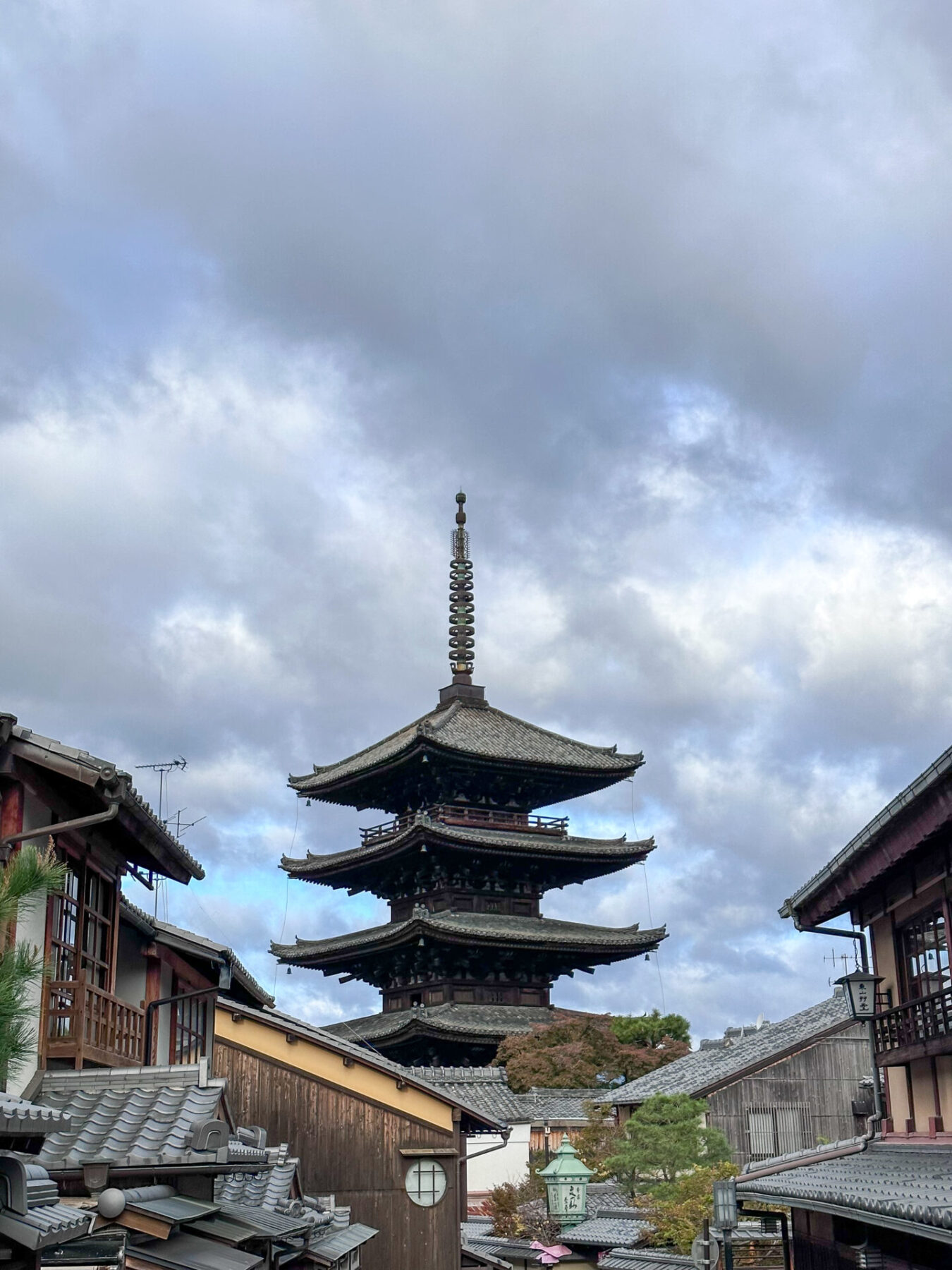
It can feel isolating
Solo travel in Japan can be isolating and challenging. When planning my solo trip to Japan, many blogs only stated the benefits, so I want to talk about the negatives too.
If you’ve never travelled solo before or you’re a bit nervous about travelling solo, I don’t believe Japan is the best place to start. The country has a very unique culture and while this is fascinating and wonderful, it can feel isolating.
As I discussed above, the hostels in Japan aren’t always the most social of places and it can be difficult to make friends. There’s also a big language barrier with many of the locals not speaking English.
While solo travel is perfectly normal and accepted by Japanese society, I did sometimes feel a little on the “outside”. Even little things like working out how the restaurant vending machines worked or buying a train ticket can be difficult.
I don’t want to put anyone off from travelling alone in Japan. It can be an incredibly liberating experience. Most solo travellers love their time in Japan.
There are so many benefits to solo travel and Japan is no exception to this. However, I think it’s important to share the challenging side of solo travel in Japan as well.
The food is amazing
The food in Japan is some of the BEST in the entire WORLD. If I had to eat one cuisine for the rest of my life, it would be Japanese food! A big part of your solo adventure in Japan is experiencing this incredible food.
Contrary to popular belief, there is so much more to Japanese cuisine than fish. I don’t eat fish but this didn’t affect my experience in Japan at all. Many people also assume Japanese food is expensive. If you’re going to go to fancy restaurants every night and eat Kobe beef or fresh sushi then yes, it’s expensive. Likewise, the restaurants catering to Western tourists also have a hefty price tag.
However, there are *so* many hidden and affordable food gems in Japan. Some of my favourite meals were in tiny restaurants with only a few reviews on Google.
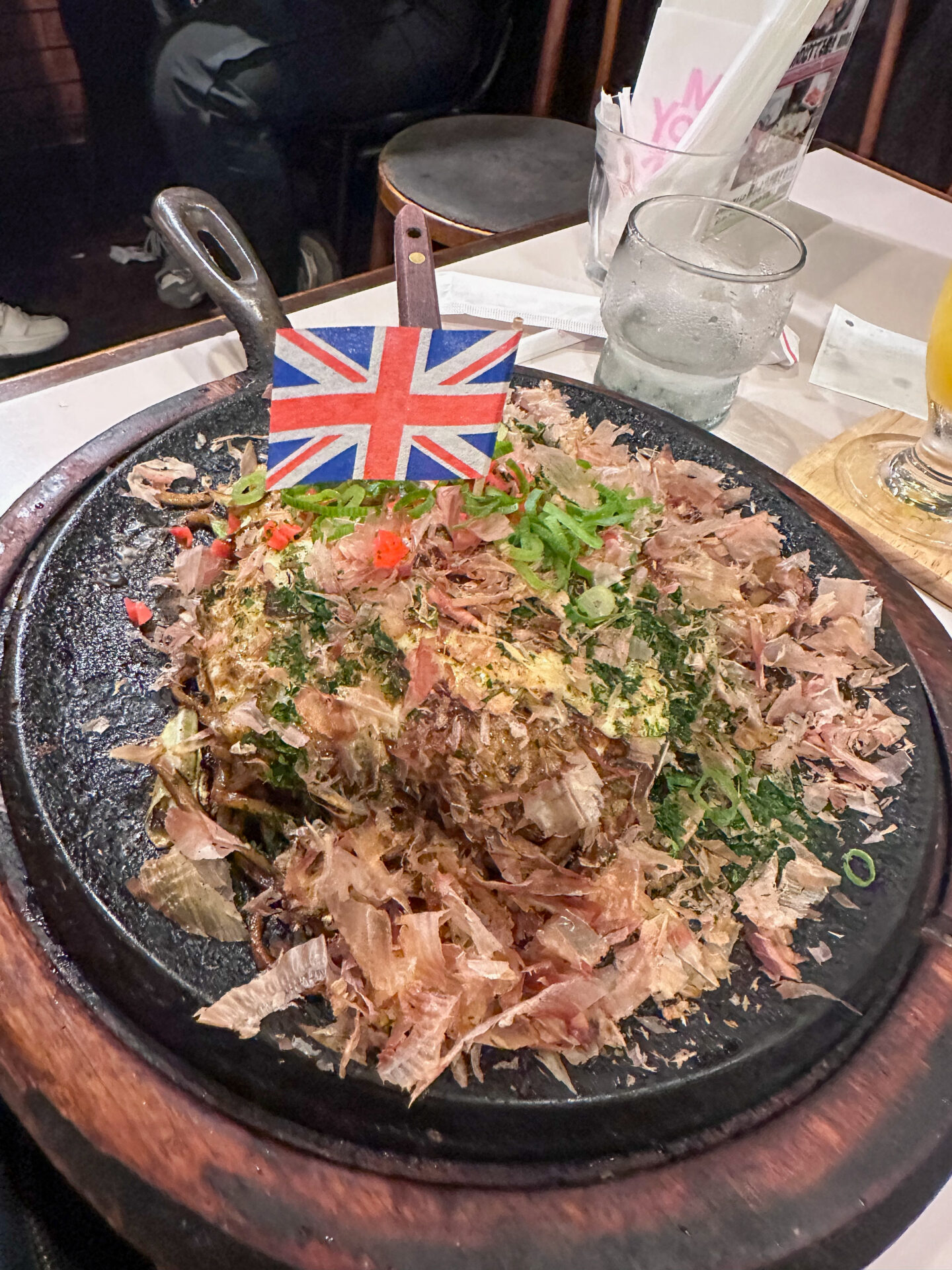
My best advice is to avoid the tourist spots and look for where the locals are. Most of the meals I bought were around the $7 mark.
Tip: TikTok raves about Gyukatsu, but this was one of my least favourite meals in all of Japan.
Street food in Japan is another good way to eat on a budget. Each area of Japan has its unique foods and style of cooking. This means the street food never gets old and there’s always something new to try.
My favourite budget food spots in Japan
- Curry bread from Tokyo Curry Pan in Asakusa (this was amazing)
- Gyoza from Nishiki Market in Kyoto.
- Beef and cheese croquettes from Kuroge in Asakusa
- Taiyaki (fish-shaped pastry stuffed with red beans or cheese). This can be found all over Japan
- Okonomiyaki (savoury pancake) from Doraju in Osaka
- Yakisoba from Mr Young Men in Kyoto
- Japanese Curry from Cocoro in Hakone.
- Curry Udon Tachibana in Osaka.
If you’re on a tight budget, the convenience stores in Japan are a great option. They have a range of delicious and high-quality sandwiches, sushi, salads, bento boxes, smoothies… the list goes on. It’s all very affordable. The 7-11 in Japan is unreal and you’ll find one on every corner. I also recommend trying Family Mart (who I think do the better coffee).
Tip: when planning a solo trip to Japan, it’s fair to question if it’s normal to eat out alone. Luckily, eating out by yourself is almost completely normal in Japan. Ironically, the only places I felt a little uneasy were the Western restaurants full of tourists. It’s completely normal for Japanese people to eat dinner by themselves. Many restaurants even cater to solo diners by having solo booths or tables with one seat.
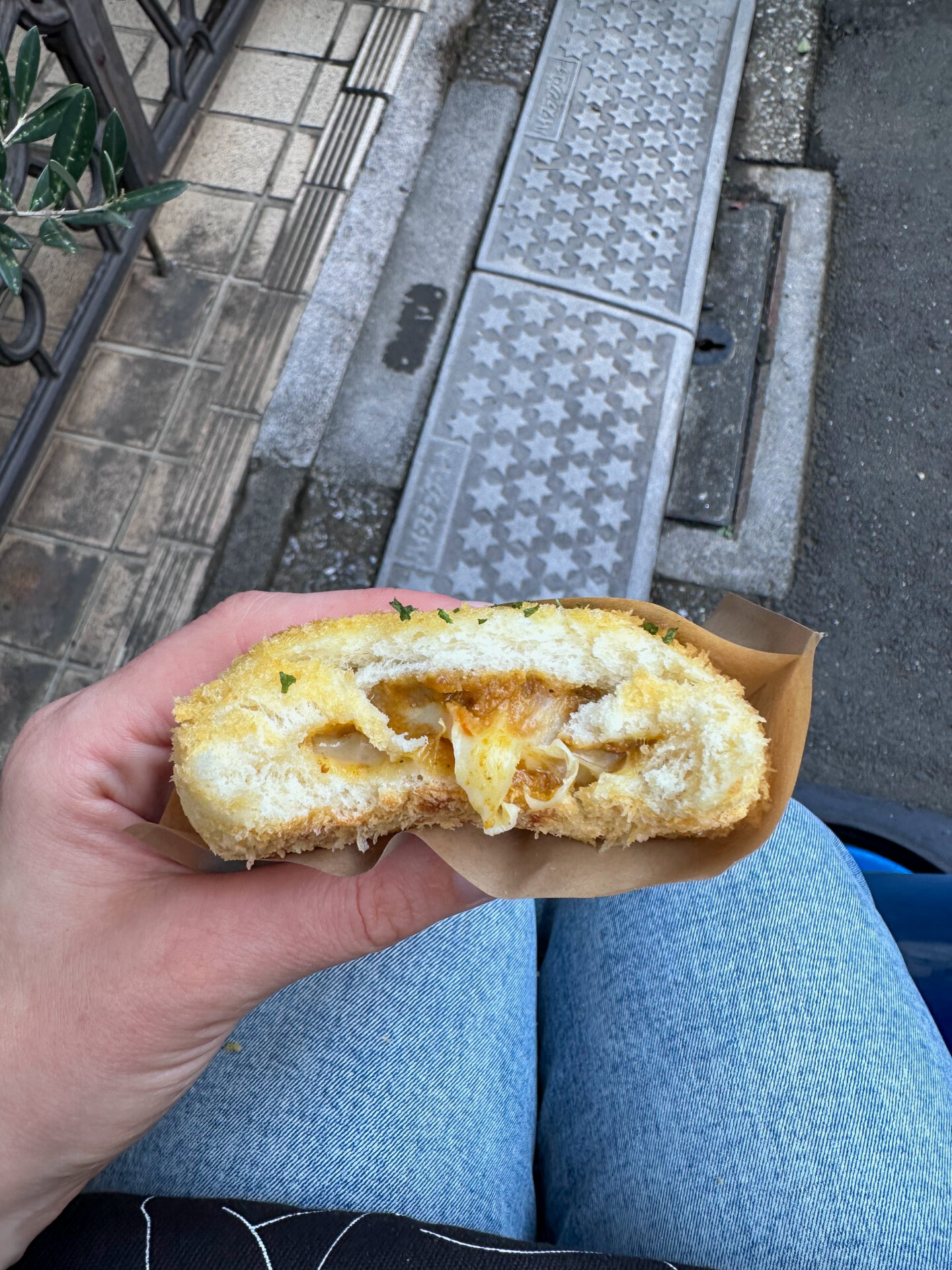
There are several helpful apps to download
Before embarking on your solo trip to Japan, there are a few helpful apps to download.
If I could only use one app in Japan it would be this one. The Japan Travel app is incredibly useful. It’s similar to Google Maps in that it will tell you how to get somewhere, but I found it to be a lot more accurate. It tells you the best place to sit on the train and which exit to use to get to your destination. I’d have been lost without this app.
The best part about the Japan Travel app is you’re able to say which rail pass you have. Whether it’s a JR pass or a regular Metro pass, it will tell you if the route is included on the ticket or not.
It makes travelling in Japan so much easier and less stressful.
Google Maps
While the Japan Travel app is useful for bus and train journeys, I’d still recommend downloading Google Maps for navigating the cities on foot. Download the maps offline in advance first so you can get around Japan without the internet.
Google Translate
This is another app I could not have lived without while in Japan. There are a couple of major language barriers in Japan. The locals don’t speak much English, but you’ll also find many menus or shopping items are only in Japanese. The Google Translate app is a great solution for this. You can type in what you want to say and show it to the locals. It’s also possible to take photos of writing and the app will translate it for you.
Many Japanese locals also use a translation app when communicating with tourists.
The tap water in Japan is clean and safe to drink. However, I found it tricky to fill up my reusable bottle during the day. Thankfully, the Mizu app is here to solve that problem.
The app shows you the nearest place to fill up your reusable bottle. This is sometimes water refill stations or cafes that will happily do it for you even if you’re not a customer.
Always carry cash
Despite being home to many major cities and modern inventions, Japan is still very much a cash-first country. Many local restaurants and cafes only accept cash.
It’s important to always carry cash with you in Japan. Some places will accept debit or credit cards, but I had a few issues so would recommend sticking to cash as much as you can.
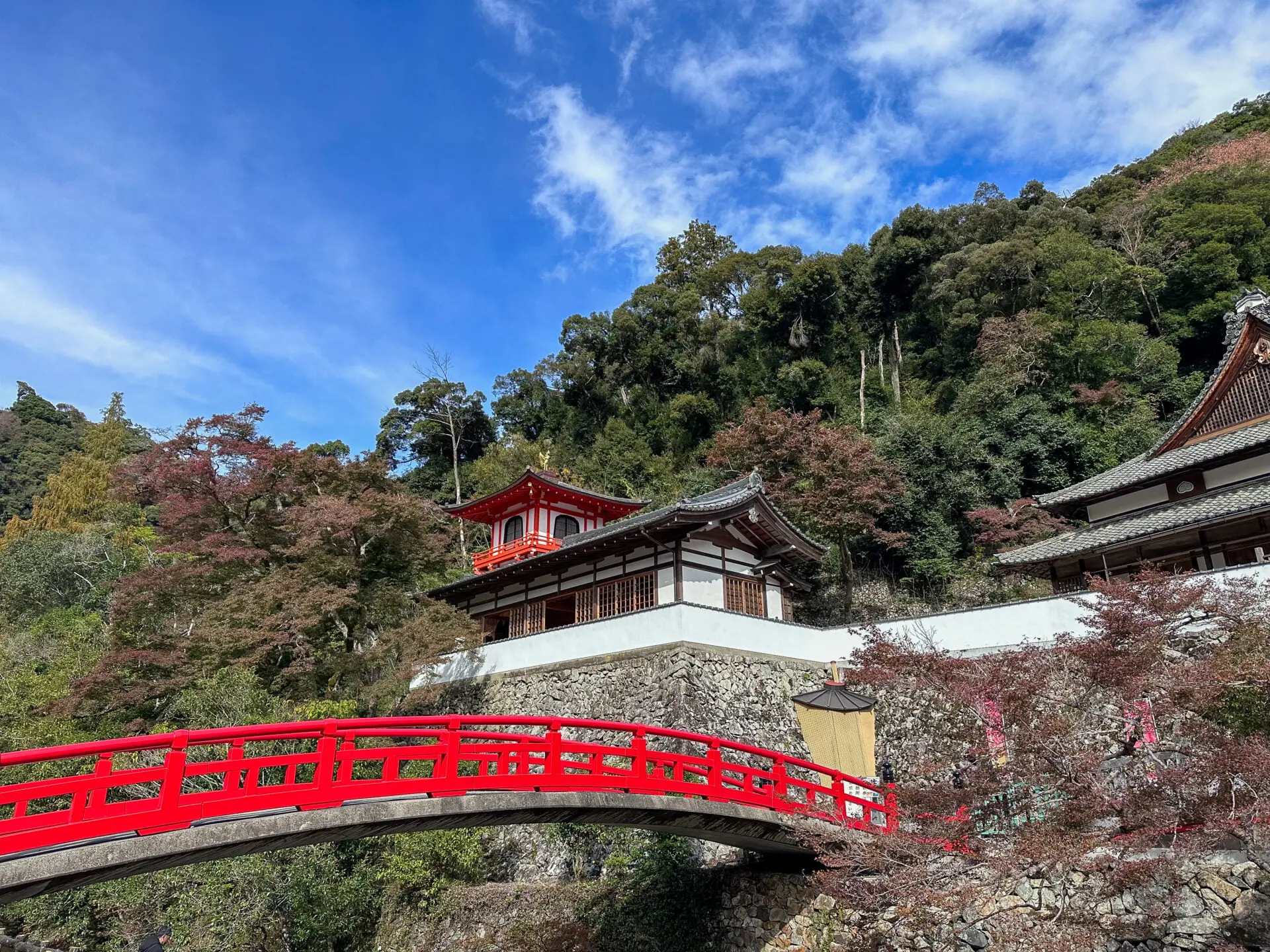
Be aware of scams and crime
Japan is a very safe country, but crimes and scams do occur, especially in the big cities. When travelling solo in Japan, it’s important to exercise some caution.
One of the most common types of scams in Japan is nightclub scams. This is when tourists are lured into bars and clubs. The staff keep the drinks coming and then charge an excessive amount on the bill. The receipts are nearly always in Japanese which means many victims fail to notice until it’s too late. They often add random charges such as charging for seats or charging for being there on a weekend. If you’re invited into a bar, the best thing is to say no.
If you’re a female solo traveller, it’s always important to follow some basic safety guidelines wherever you are in the world. Yes, Japan is very safe and the chances of something happening are low. But that doesn’t mean it’s a good idea to go walking down dark alleys alone at 3 am.
You might need to book ahead of time
One of the best things about solo travel is having the freedom to do what you want and change your plans. However, this isn’t always the case in Japan.
Each year, millions and millions of people head to Japan to explore this amazing country. If you’re visiting Japan during the peak season, you may need to book your accommodation, transport and activities ahead of time. The busiest months in Japan are March, April and May. The summer holidays and autumn months can also see a spike in visitors.
I booked my accommodation about six weeks before my November trip. I found many of the budget hostels with a good rating had almost sold out (and some had completely sold out). Activities such as TeamLab Tokyo and the Harry Potter Studio Tour had also almost sold out.
Solo travellers without a fixed timeframe might not need to worry about booking ahead. However, if you have a set amount of time and there are specific things you want to see and do, I’d advise booking ahead.

Avoid tourist traps
Solo travel in Japan is a great opportunity to immerse yourself in Japanese culture and local life. You have the complete freedom to do what you want and at your own pace.
One thing I noticed in Japan was the amount of tourist traps. These were usually destinations only popular thanks to TikTok and other social media platforms. As a solo traveller, you have the choice to completely avoid these and don’t need to worry about what someone else might want to do.
Consider going off the beaten track while on your visit to Japan. You can still visit the likes of Tokyo and Kyoto, but consider exploring some lesser-visited areas of the cities such as Yanaka Ginza or Uji. There are also plenty of amazing day trips from Tokyo and Osaka to lesser-visited destinations. I was gutted I didn’t get to explore more of these destinations.
My next trip to Japan will certainly be more focused on escaping the crowds and discovering hidden spots.
Consider group tours in Japan
If you’re nervous about solo travel in Japan, consider a group tour. Small group tours are an amazing way to explore a country if you’re too nervous to travel completely alone.
Related read: everything you need to know about group tours
There are several small group tour operators in Japan. Each of the tours includes a tour guide, accommodation, transport and some activities. Some of my favourite small group tour operators in Japan are G Adventures, Intro Travel and One Life Adventures. Intrepid are another fantastic option, and they tend to cater towards an older demographic.
If you want to visit Japan but are nervous about going alone, group trips could be the answer!

Buy an eSim
It’s a good idea to stay connected while in Japan. As a solo traveller, it’s good to have a way of contacting someone in case of an emergency. In Japan especially, I found myself using my phone more than ever. This was mainly due to using the Google Translate App, or quickly researching something while out and about.
SIM Cards in Japan aren’t quite as straightforward as in other countries. Tourists can only buy data plans and they are very expensive.
The best solution is to buy an eSim. It’s still expensive, but it removes the need to worry about a physical SIM.
Normally, I’d recommend using the trusty Airalo. For Japan, I suggest using Ubigi. Ubigi has a much better network in Japan compared to Airalo.
Summary: is Japan good for solo travel?
Yes, Japan is great for solo travellers. When it comes to safety and getting around, it doesn’t get much better than Japan. Not only is Japan one of the safest countries in the world, but it has a great infrastructure making it an easy country to navigate.

However, I don’t think Japan is the best destination for every first-time solo traveller. Japan can sometimes feel very isolating. You need to be confident in the busy cities, deal with cultural differences and overcome the language barrier all by yourself. You also need to be comfortable with your own company and happy to explore Japan by yourself.
I haven’t said that intending to discourage solo travel in Japan. I just want to be entirely honest based on my experience in Japan. It’s a completely different solo travel experience to the likes of Thailand, Mexico or Australia. Having said that, solo travel in Japan is an amazing way to push yourself out of your comfort zone and immerse yourself in the culture.
If you’re a confident solo traveller, then Japan is one of the best solo travel destinations in the world. With a low crime rate, fantastic public transportation and unique attractions steeped in history, it is an incredible destination.
Ultimately, only you can decide if Japan is the right solo travel destination for you. Put it this way, I’m glad I went to Japan alone. But I’m also glad it wasn’t my first solo trip. However you travel in Japan, it will no doubt be an unforgettable experience!



